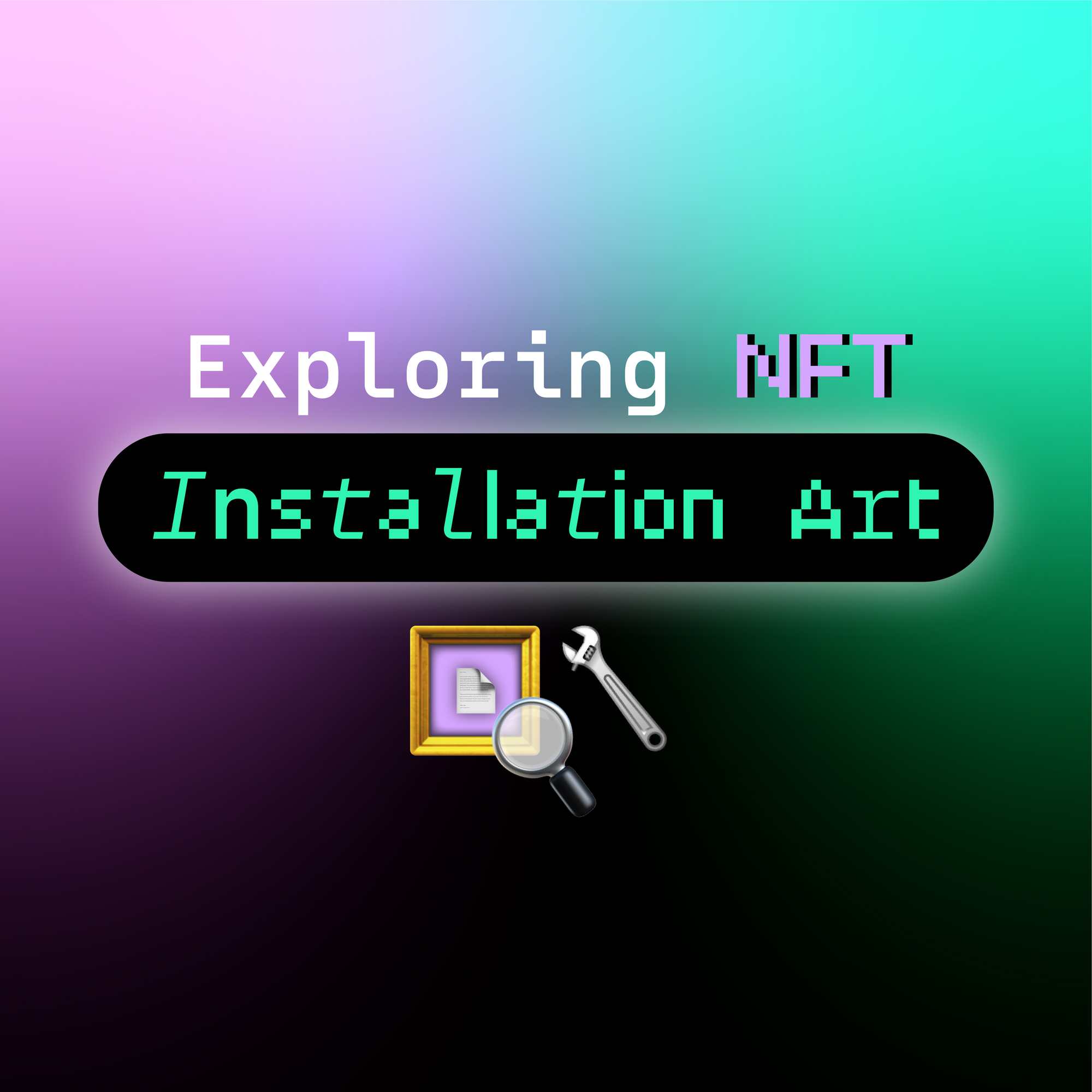Exploring NFT Installation Art
By Terrain.art | Mar 25 2022 · 4 min read
Adrian Stein’s new immersive installation art aims to combine the digital with the physical – a visionary artistic expression that might soon become the norm in the art world.
One of the fundamental challenges of new media artists using emerging technologies has been to bridge the gap between physical art and the art that primarily uses the digital medium as a means of creative expression.
New media artist Adrian Stein’s latest immersive installation Quantum Mirror aims to explore how digital connectivity interacts with the physical world. One of the most interesting aspects of his artwork is the fact that this is the world’s first-ever NFT installation art as it uses NFT-backed digital animations of abstract human figures as a part of the installation. Critics are calling it the future of installation art, which has so long eluded the world of NFT artworks.
The World of NFTs
NFTs are non-fungible tokens that run on blockchain technology and provide a certificate of authenticity to any artwork. An NFT is a digital token, but it can be attached to both physical and digital artworks. NFTs may be particularly needed for digital artworks that can be replicated and shared across the internet without attribution to the original artist. By incorporating NFTs in installation art, Stein has not only successfully bridged the gap between the digital and the physical, but he has also opened a new avenue to explore how installation art can be creatively incorporated into NFTs.
Bring the Digital and Physical Worlds Together
Stein calls the Quantum Mirror a structural mediation on modern human consciousness. It is a giant installation of an infinity room fitted with 150 mirrors. As viewers step inside 300 square feet of mirrored space, their reflection is infinitely morphed by Stein’s digital NFT animations of abstract human figures. According to Stein, the installation is a reflection on the human obsession with screens and mirrors and how the coming of social media has heightened the preoccupation with our self-image.
In a recent interview, Stein said, “Quantum Mirror is the first immersive NFT installation, meaning that when you walk into the installation/sculpture, you're totally enveloped by the reflections created by the images on the screen. As you walk around and you listen to the music and view the images, you see yourself, metaphorically, literally in the reflection of the space, which is about you… it's about you as a human in your interaction with technology." While Quantum Mirror is currently open to visitors inside ARTSPACE 8 gallery in Michigan, you can buy the digital NFT animations used in the installation on Mintable.
Stein's work is a part of a growing trend of artists trying to bridge the gap between emerging technologies and physical art. Earlier, we came across Plantoid – a Bitcoin-eating robotic art installation that attempted to merge the natural world with new blockchain technology. Iconic Fashion brand Bulgari recently transformed its Serpenti emblem into an immersive installation artwork that is set to become an NFT token for auction.
NFTs: The Future of Installation Art
Going by the way NFTs are beginning to take over the world of art, it may be safely said that transforming installation art into auctionable digital tokens may be the way forward for many installation artists. While installation art is often site-specific in nature and closely tied to public art and our notions of the physical space, creatively incorporating digital art and emerging technologies like AI, robotics, and NFT-backed digital images into installation art will help installation artists to tap into the hitherto unexplored world of NFTs.
Perhaps, the future of all art lies in Metaverse – a digital universe that can be accessed through virtual reality, a place where the difference between the digital and the physical will no longer exist.

